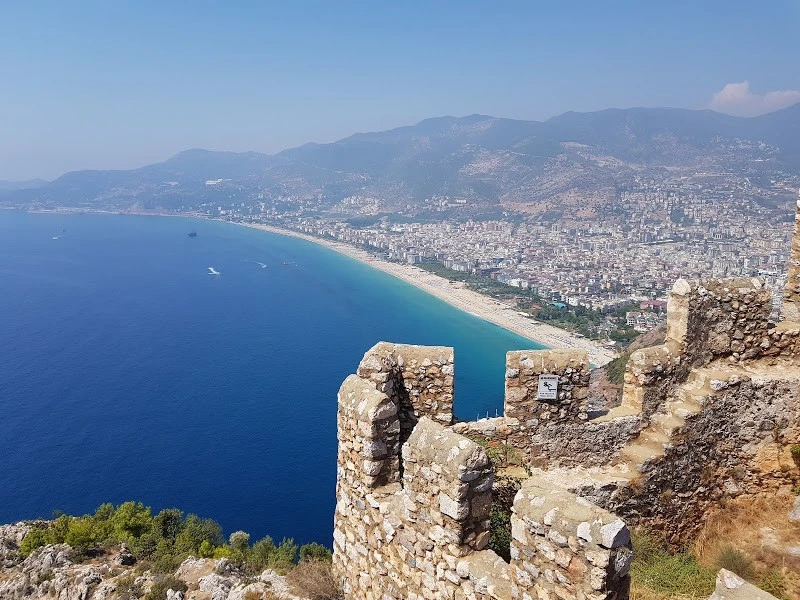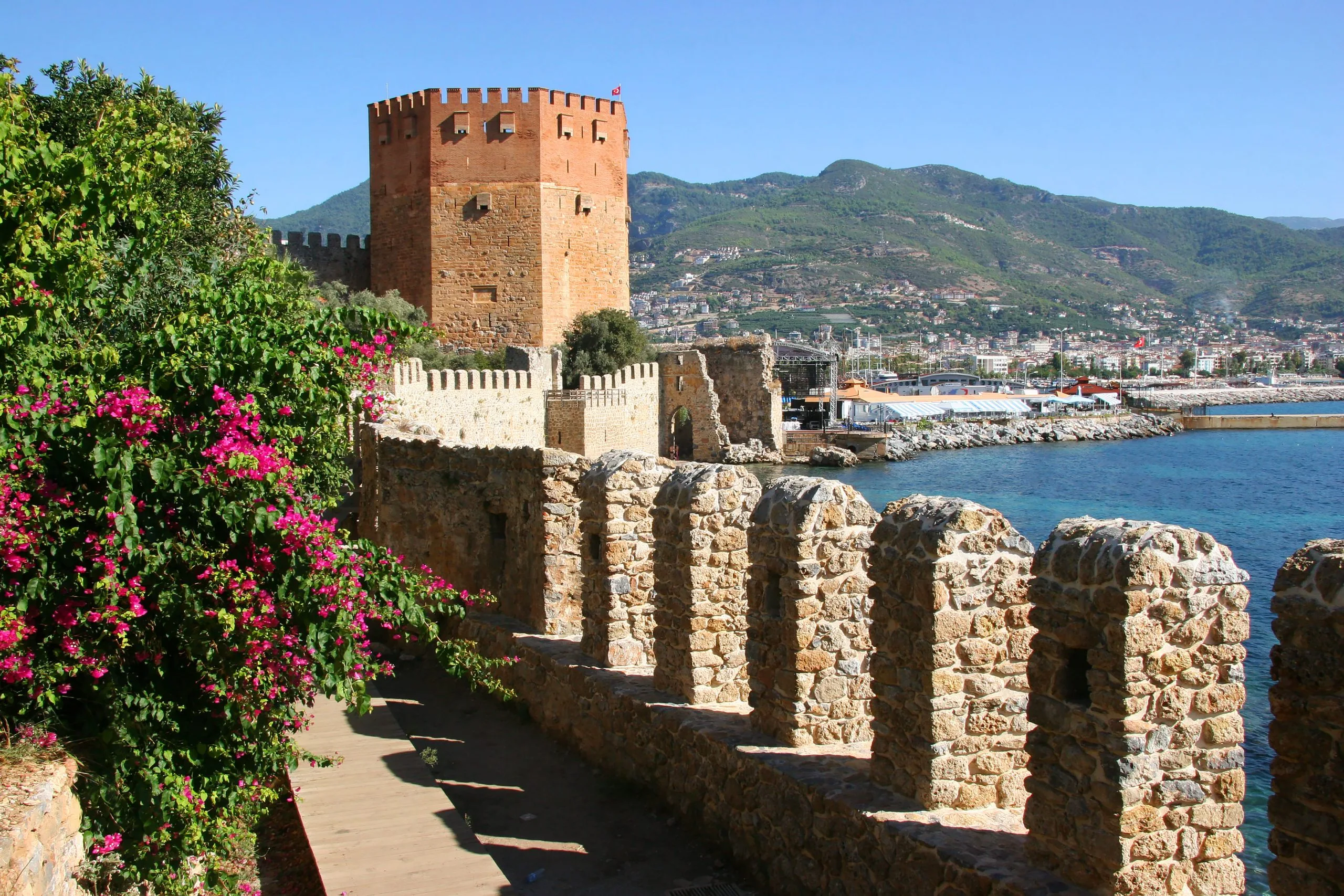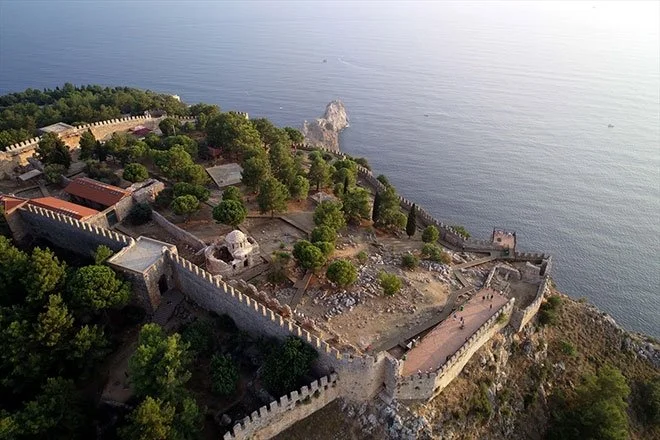Alanya Castle
Description
Alanya Castle, which has been uninterruptedly inhabited throughout its history due to its difficult accessibility by sea and land and its natural protection, is one of the best preserved and best maintained of the hundreds of castles that adorn Anatolia. With its 6.5 kilometers of walls, it is like a shining jewel on the neck of the historic peninsula where it is located. Although the first settlement dates back to the Hellenistic period, it was during the Anatolian Seljuk period that it took the form of a monumental castle in all its glory.
Alanya, which was called Kalonoros (Beautiful Mountain) during the Byzantine period and was one of the busiest ports of the Mediterranean, was taken over by the Anatolian Seljuk Sultan Alaeddin Keykubad I in 1221. The name of the castle and the city was changed to "Alaiye", the walls were reinforced and new fortifications and cisterns were built. The shipyard, which was the second Seljuk shipyard after Sinop and earned Keykubad the title of "Sultan of the Two Seas", the octagonal Kızılkule, Tophane and the inner castle complex, which are among the symbols of Alanya, were built in the same period.
The "Inner Castle" on the top of the peninsula, 250 meters above the sea, and the "Middle Castle (Ehmedek)" on the northern slope are open air museums. You can see Byzantine, Seljuk and Ottoman artifacts together in the Inner Castle section, which is believed to have been inhabited as long as the history of Alanya. Churches and chapels from the Byzantine period, the Bedesten, a commercial building, the Masjid and the tomb from 1230, named after Akşebe Sultan, one of the first commanders of the castle; The Seljuk Palace, where the remains of old buildings were used in its construction, houses, baths, many cisterns that meet the water needs of the castle, dungeons; Suleymaniye Mosque, which is a 13th century work but was rebuilt by Suleyman the Magnificent, and the historic lighthouse, which guided ships for years, are some of these works.
Kızılkule - Shipyard
Alanya Castle took its present form during the Anatolian Seljuk period when it was in its heyday and the Red Tower, the symbol of Alanya, was added to the walls at that time. Built in 1226 by Alaeddin Keykubad, the octagonal tower is 33 meters high and takes its name from the color of its material. The Red Tower is very well preserved. The first floor is now used as an ethnographic museum.
The arched structure that can be seen by the sea near the Red Tower is the Shipyard, the only one of its kind from that period, which enabled the Seljuks to become strong in the seas. Built by Alaeddin Keykubad, the shipyard was used for the construction and repair of ships as well as the production of sails and other ship materials. The shipyard, which was in use until the 1960s, is now a ship and maritime museum.
You can explore Alanya Castle, which is the subject of many legends, along with the Red Tower and the shipyard, as well as other historical buildings that extend to the top of the peninsula. If you want to start your trip from the top, you can take the cable car from the station next to Cleopatra Beach and enjoy the fascinating beauty of the Mediterranean Sea and the magnificent view of Alanya from a bird's eye view.
Short Description
Alanya Castle, which has been uninterruptedly inhabited throughout its history due to its difficult accessibility by sea and land and its natural protection, is one of the best preserved and best maintained of the hundreds of castles that adorn Anatolia. With its 6.5 kilometers of walls, it is like a shining jewel on the neck of the historic peninsula where it is located. Although the first settlement dates back to the Hellenistic period, it was during the Anatolian Seljuk period that it took the form of a monumental castle in all its glory.




